The bad news…Nothing lasts forever.
The good news…Nothing lasts forever.
And that’s where renovations and remodels come in! Yippee!
So what do you need to plan for? Or better yet, count on, so you can make a more convincing argument for change?
Here’s a list of estimated life spans and expectancy for different elements and areas of your home. I consulted with my brother-in-law, David Graham of Graham’s Home Inspections, and did a little extra digging as well, to put this together for you. Everything truly varies depending on the amount of use, quality and durability of the materials. Styles in homes change, just like fashion…so when something has to go, we can celebrate the new!
30 + Years
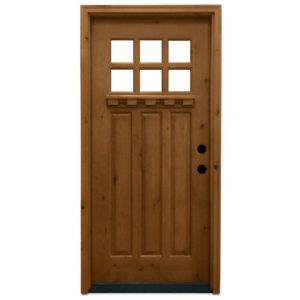
Photo courtesy of Home Depot
Doors: 20+ years
Interior doors, along with exterior doors made from fiberglass, steel and properly cared for hard wood can last the life of the house. Screen doors and a typical vinyl exterior door will maintain a good look for about 20+ years. The areas that might need attention sooner could be the door seal and or jamb, especially if there’s any movement with the home.

Photo courtesy of Pella
Windows: 15-30+ years
Aluminum windows have a shorter life span than vinyl or wood. Exposure to varying temperatures, sun and weather lead to the deterioration and warping. Fogging of glass indicates a broken seal. When looking to replace windows, check with the manufactures warranty, and also the warranty for installation. They can be two separate things…because proper installation of a window will help lengthen the life of it.
Key Tip: David recommend to pay attention to changes in your heating and cooling bills. That’s a great sign that windows and doors should be checked.
15+ years
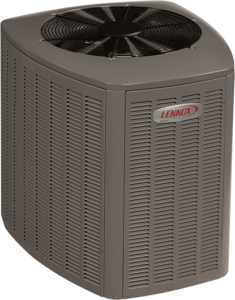
Photo: courtesy of Lennox
HVAC Systems: 15-20 years.
Properly installed heating and cooling systems can last 15-20 years. Their lifespan is affected by weather and how much they are used. Coastal areas might last 12 years due to the elements. To maintain a system, clean the ducts and intakes, and change the filters (as needed ever 1-3 months.)

Photo courtesy of J&J Roofing
Roofing: 15-20 years
Asphalt shingle roofs can last up to 20 years. Roofs made with wood shakes, tiles, fiber cement, copper or clay can last 25-50 years…depending on the material. Hailstorms can wreak havoc on any roof and those are always unpredictable. If you notice tiles turning up or appearing loose, it’s time to call an expert for their advice.
10+ years
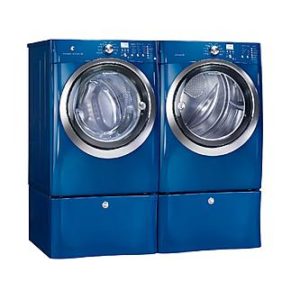 Photo courtesy of Sears
Photo courtesy of Sears
Washer and Dryers: 10-12 years
Most manufactures design their machines to last about 10 years. We were lucky and had a pair that lasted 18 years. (We got quite the look when we told the appliance man how old they were.) Regular maintenance and care will help you reach that mark. Also, following manufacture use suggestions will as well.
Key Appliance Tip: If a machine goes out earlier than expected, or you experience problems such as mold in the seals that you cannot remove, check the the specified appliance manufacturers website for recall items. We found out that our washer and dryer had a lawsuit against the make/model we owned and we could have received compensation. We didn’t think to check with the manufacturer and therefore missed the opportunity of getting our units replaced, or receiving reimbursement toward a new pair.
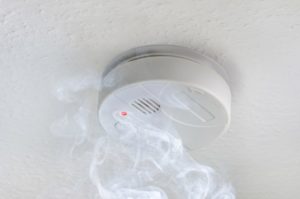
Photo courtesy of Consumer Reports
Smoke Alarms: 10 years
Sensors inside smoke alarms can become less sensitive over time. The National Fire Proection Association therefore recommends replacing them every 10 years, whether they are battery or hardwired. Carbon monoxide alarms should be replaced every 5-7 years.
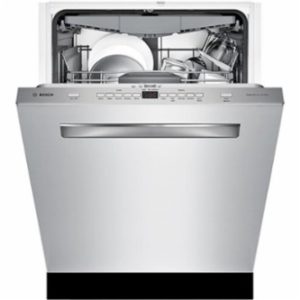
Photo courtesy of Best Buy
Dishwashers: 10 years
Longevity with these machines comes down to use and care. Keep drains clean, load it properly and use it regularly. Manufactures say to use it once a day; we might use it twice a week.
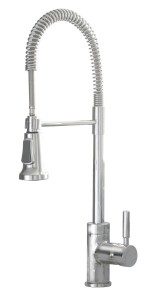
Photo courtesy of Essen
Faucets: 15 years
You know it’s time to replace a faucet when the gaskets and moving parts where out, which cause constant dripping or become less effective when turned on. Look for solid brass fittings when you go to replace your current one. Inexpensive faucets have plastic parts inside, which will break down quicker.
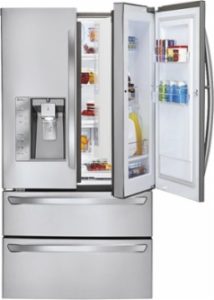
Photo courtesy of Best Buy
Refrigerators: 12-14 years
Proper maintenance of refrigerators includes keeping the coils cleaned and changing the filters. Dust and pet hair are highly attracted to the coils so get yourself an appliance brush and clean out from under the fridge 2-4 times a year. A full fridge works more efficiently than one with barely anything in it. Energy efficiency is the “new black” and makes the investment in an upgrade worthwhile if yours is past its prime.

Photo courtesy of Home Depot
Water Heaters: 10-15 years
According to David, when you hear rumbling noises, lose hot water when the pilot is on, or experience a rotten egg smell, it’s time to upgrade your water heater.
5+ years

Photo courtesy of Mohawk
Carpet: 5-10 years
The quality of materials (carpet and pad), installation and the amount of use it gets will dramatically affect the life span of carpet. Do you have kids? Pets? Wear shoes in the house? If so and you find the carpet smelly, stained, tattered, “flat” or hard to clean, it might be time to consider an update. Most companies offer sales throughout the year and you can also take advantage of 0% financing for 12 months, if offered. Be sure to ask.

Photo courtesy of 21st Century Paint
Paint: 5-10 years
Exterior paint fades faster than interior, although most people will change interior colors before they ever consider updating the outside. Depending on the use of a room, paint might last longer in some parts of the home than others. With all the advancements in paint, it’s easy to find the perfect one for your home. Bathrooms now can be painted with mildew resistant paint, which can be a game changer for many! Check with your local paint experts about the type of paint you need, not just the sheen.
For a more extensive list of life expectancy of homes, from appliances to interior and exterior materials, go to NAHB Study of Life Expectancy of Home Components
Another great resource is How Long Do the Parts of a House Last? by Green Builder Media
David’s simple tip… it’s always a good time to replace anything when it stops working. Thanks David for that very wise advice!
What have you recently had to replace, or think you might need to?
Look at these items as investments in your lifestyle, rather than “expenses”. It helps with the process and your mindset.
Cheers to your beautiful home!


No Comments